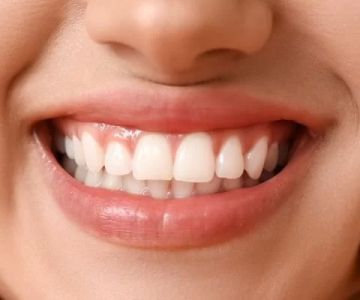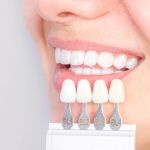- 1 - Understanding Why Gums Turn Red
- 2 - Poor Oral Hygiene as a Major Cause
- 3 - Red Gums and the Link to Gum Disease
- 4 - Underlying Health Factors That Contribute
- 5 - Real-Life Cases of Red Gums
- 6 - Prevention and Professional Care
1. Understanding Why Gums Turn Red
When people notice red gums in the mirror, it’s usually a sign that something is off with their oral health. Healthy gums are typically firm and pink, but redness often indicates inflammation, irritation, or infection. While occasional redness may be caused by something as simple as brushing too hard, persistent changes can signal deeper issues that should not be ignored. Understanding the causes of red gums is the first step toward preventing more serious dental problems.
2. Poor Oral Hygiene as a Major Cause
One of the most common causes of red gums is inadequate oral hygiene. When plaque and bacteria accumulate along the gumline, the body responds with inflammation, which makes gums appear swollen and red. Neglecting daily brushing and flossing can quickly lead to gingivitis, the earliest stage of gum disease. Many dentists recommend regular professional cleanings, along with consistent at-home care, to reverse this condition before it progresses further.
3. Red Gums and the Link to Gum Disease
Redness in the gums often signals the beginning of gum disease. Gingivitis may cause bleeding when brushing, but if left untreated, it can advance to periodontitis, which damages the bone and tissues supporting the teeth. In this stage, gums not only look red but may also recede, creating pockets that trap bacteria. Studies in the U.S. show that gum disease is one of the leading causes of adult tooth loss, making early recognition and treatment of red gums extremely important.
4. Underlying Health Factors That Contribute
Beyond oral hygiene, several health factors can contribute to gum redness. Hormonal changes during pregnancy or menopause often increase gum sensitivity. Certain medications may reduce saliva flow, leading to dryness and gum irritation. Systemic health conditions such as diabetes or vitamin deficiencies can also show their first warning signs in the mouth. Paying attention to gum health not only protects teeth but may also provide insights into overall well-being.
5. Real-Life Cases of Red Gums
Take the case of a college student who ignored her red gums for months, assuming it was normal. Over time, the inflammation worsened, and she eventually needed periodontal treatment to restore her oral health. Another example involves a middle-aged man with diabetes who noticed persistent gum redness. After consulting his dentist, he discovered it was a sign of poorly controlled blood sugar. These real-life situations show how red gums can act as a warning signal for both dental and systemic health issues.
6. Prevention and Professional Care
Preventing red gums begins with consistent oral hygiene: brushing twice a day with fluoride toothpaste, flossing daily, and using an antibacterial mouth rinse when recommended. However, at-home care is only part of the solution. Regular dental visits play a crucial role in identifying early signs of gum disease and addressing them before they escalate. For those experiencing persistent redness or discomfort, seeking help from trusted professionals, such as those available through Family Dentistry Online, ensures proper diagnosis and treatment tailored to individual needs.







 Fircrest Children's Dentistry4.0 (28 review)
Fircrest Children's Dentistry4.0 (28 review) Great Expressions Dental Centers - Maple Canyon4.0 (261 review)
Great Expressions Dental Centers - Maple Canyon4.0 (261 review) Smile Shop Newtown5.0 (298 review)
Smile Shop Newtown5.0 (298 review) Dr. Hecklin: Family & Cosmetic Dentistry5.0 (316 review)
Dr. Hecklin: Family & Cosmetic Dentistry5.0 (316 review) Dentistry by Dr. David - Holistic and Zirconia Implant Dentist4.0 (313 review)
Dentistry by Dr. David - Holistic and Zirconia Implant Dentist4.0 (313 review) Brident Dental & Orthodontics3.0 (509 review)
Brident Dental & Orthodontics3.0 (509 review) The Importance of Oral Health Education During Pregnancy for a Healthy Pregnancy
The Importance of Oral Health Education During Pregnancy for a Healthy Pregnancy Best Tips for Brushing Your Teeth Properly for Healthy Gums: Essential Techniques for Oral Health
Best Tips for Brushing Your Teeth Properly for Healthy Gums: Essential Techniques for Oral Health Why Skipping Dental Checkups Can Lead to Bigger Oral Health Problems
Why Skipping Dental Checkups Can Lead to Bigger Oral Health Problems Advantages of Porcelain Dental Restorations
Advantages of Porcelain Dental Restorations How Can Diabetes Cause Tooth and Gum Problems? Preventing and Managing Oral Health Issues
How Can Diabetes Cause Tooth and Gum Problems? Preventing and Managing Oral Health Issues Healthy Habits for Promoting Good Oral Health and Hygiene: Tips for a Healthy Smile
Healthy Habits for Promoting Good Oral Health and Hygiene: Tips for a Healthy Smile